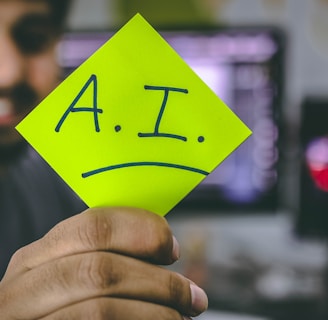How can AI be used in conjunction with IA
What are the automated options for auditors? Here we explore at a high level some considerations.
3 min read


Let’s delve into the transformative role of Artificial Intelligence (AI) in Internal Auditing. In this extended version, we’ll explore additional facets and provide more detailed insights in relation to how auditors can use AI.:
1. Automating Routine Tasks
Data Extraction and Cleansing: AI-powered tools can automatically extract relevant data from various sources, including financial systems, databases, and spreadsheets. They also assist in data cleansing by identifying inconsistencies, missing values, and outliers.
Transaction Testing and Sampling: AI algorithms can analyse entire datasets rather than relying on traditional sampling methods. This improves audit coverage and reduces the risk of missing critical anomalies.
Reconciliation and Matching: AI can reconcile financial records, identify discrepancies, and match transactions across different accounts or systems. For instance, it can verify that sales records match corresponding inventory movements.
2. Enhancing Risk Assessment
Predictive Analytics: AI models analyse historical data to predict future risks. By assessing patterns, correlations, and seasonality, auditors gain insights into potential vulnerabilities.
Scenario Modelling: AI allows auditors to simulate various risk scenarios. For example, it can project the impact of economic downturns, supply chain disruptions, or cybersecurity breaches on an organisation’s financial health.
Risk Heat Maps: AI-generated risk heat maps visually represent areas of high and low risk. These maps guide auditors in allocating resources effectively during audits.
3. Improving Fraud Detection
Anomaly Detection: AI algorithms learn from historical fraud cases and identify deviations from expected behaviour. Unusual transactions, sudden spikes, or irregular patterns trigger alerts for further investigation.
Behavioral Analysis: AI examines employee behaviour, communication patterns, and access logs. It flags anomalies such as unauthorised access, unusual login times, or excessive privileges.
Sentiment Analysis: NLP techniques analyse employee communications (emails, chat logs) to detect signs of collusion, unethical behaviour, or fraud.
4. Natural Language Processing (NLP) for Text Analysis
Contract Review: NLP parses contracts, extracting key terms, obligations, and deadlines. It identifies non-standard clauses, potential risks, and compliance gaps.
Policy Compliance: NLP scans policy documents and employee manuals, ensuring alignment with regulatory requirements and internal guidelines.
Sentiment Analysis in Customer Feedback: NLP analyzes customer reviews, emails, and social media posts to gauge sentiment and identify emerging issues.
5. Continuous Monitoring and Real-Time Insights
Event-Driven Auditing: AI enables real-time monitoring of critical events (e.g., large transactions, system breaches). Auditors receive alerts instantly, allowing timely intervention.
Dynamic Risk Assessment: Rather than relying solely on annual risk assessments, AI adjusts risk profiles dynamically based on changing business conditions, market trends, and external factors.
Fraud Prevention: AI detects anomalies as they occur, preventing fraudulent activities before they escalate.
6. Challenges and Considerations
Data Quality and Bias: Garbage data leads to flawed insights. Auditors must ensure data accuracy, completeness, and relevance. Addressing bias (e.g., gender, race) in AI models is a very topical subject and one that AI may or may not pick up.
Model Explainability: Auditors need to understand how AI models arrive at decisions. Techniques like SHAP (SHapley Additive exPlanations) provide transparency.
Ethical Dilemmas: AI decisions impact stakeholders. Balancing efficiency with fairness, privacy, and ethical norms is essential.
Human-AI Interaction: Auditors must interpret AI outputs, validate results, and exercise judgment. Human oversight prevents blind reliance on algorithms.
7. Case Studies and Success Stories
KPMG: Their AI-driven audit platform, “KPMG Clara,” integrates machine learning, NLP, and data analytics. It enhances audit quality and efficiency.
Deloitte: Deloitte’s “Argus” uses AI to analyse vast datasets, identify risks, and prioritize audit areas. It streamlines audit workflows.
ISACA: The AI Auditing Framework provides guidelines for leveraging AI while addressing risks and controls.
Conclusion
AI is reshaping internal audits, but it’s not a silver bullet. Auditors must embrace AI while maintaining professional skepticism. The synergy between human judgment and AI-driven insights will define the future of auditing.
Remember, auditors wield AI as a powerful ally—one that amplifies their abilities and ensures robust governance and risk management.


